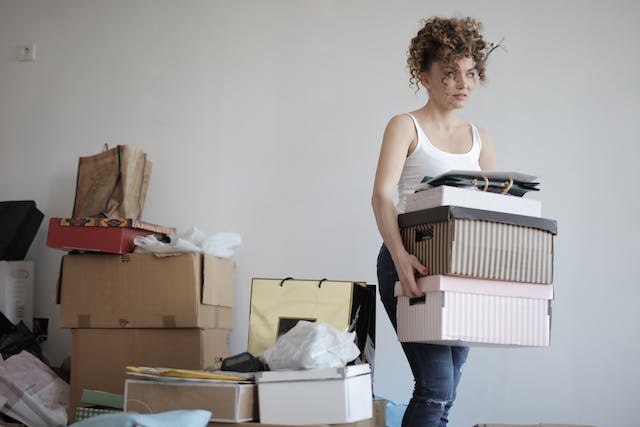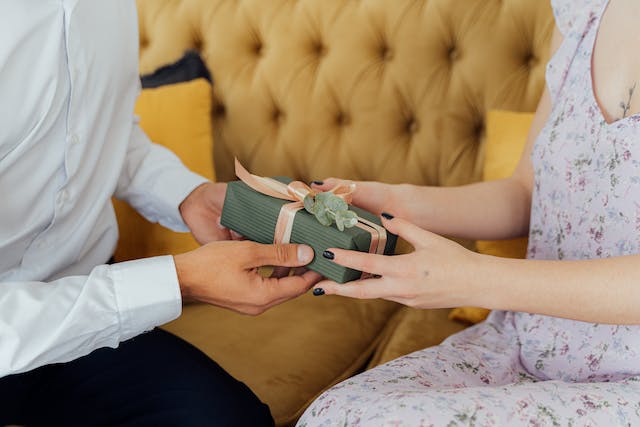
My guest blogger this month is Melissa Knowles a passionate writer and expert in de-cluttering sentimental items. With a background in psychology and a love for preserving memories, she combines her knowledge to help readers cherish their past without the chaos. When not writing, Melissa enjoys hiking and capturing the beauty of nature through her photography.

Often, organizing sentimental items presents a unique challenge. These treasures, rich with personal history and emotions, can quickly accumulate, leading to a cluttered space that overshadows their proper value. The key lies in striking a balance between holding onto those precious memories and maintaining a tidy, peaceful living area. We will address this issue, guiding you through practical strategies to preserve memories without clutter. Whether you’re dealing with a box full of old photographs, heirlooms passed down through generations, or souvenirs from travels, we’ll provide insights on managing these items thoughtfully.
Understanding sentimental value
What makes an item sentimental varies considerably from person to person. It could be a family antique, a trip souvenir, or a simple note, each carrying its own story and emotional weight. These items connect us to memories of important people or events, making them invaluable. The emotional attachment to these keepsakes is deep-rooted, often evoking a sense of nostalgia, joy, pain or comfort. However, objectively evaluating their sentimental value is crucial to avoid clutter. It involves asking yourself hard questions about each item’s significance and role. Does it bring joy or merely take up space? Is its emotional significance still powerful, or has it faded over time? How many items do you need to remember the event or person? Are there other ways to keep the memory alive without holding onto a physical item? Do these items hold you in the past and letting go of them will help you to move forward with your life? Answering these questions can help distinguish between valuable keepsakes and mere clutter, enabling a healthier, more organized living space.

The art of selective keeping
The art of selective keeping is about making conscious choices on what to hold onto and what to release. Being selective ensures that each kept item truly resonates with personal significance, creating a decluttered and organized space. Here’s how you can determine what’s worth keeping:
- Emotional Connection: Does the item evoke positive emotions? Keep those that bring joy or comfort.
- Uniqueness: Prioritize items that cannot be replaced or replicated, like handmade gifts or family heirlooms.
- Usage: Consider if the item is something you use or enjoy regularly. Practicality can be a form of sentimentality.
- Condition: Keep items in good condition, as damaged goods often contribute to clutter.
Creative display options
Creatively displaying sentimental items can transform them from clutter to charming decor elements. These treasures can add a personal touch to your living space, telling your unique story. Create a themed gallery wall where photos, souvenirs, and artworks can narrate a cohesive story. Shadow boxes are another excellent option, perfect for showcasing smaller items with depth and protection.
Incorporating keepsakes into functional decor is both artistic and practical. A vintage quilt, for example, could serve as a striking wall hanging or a cozy throw. Similarly, you can use heirloom dishes for special occasions or display them in a glass cabinet, adding elegance and history to your dining area. Lastly, arranging items in groups of three or five can create a balanced, visually appealing display. This method, known as the ‘Rule of Odds,’ suggests that an odd number of items are more effective at capturing attention and adding visual interest.
Create a small personal area in your home office, bedroom or kitchen to display a few times on a shelf and wall that represent the memories that are most precious in your life. As you work in that space these memories will help you to reflect on the past and bring a sense of gratitude that your life is full of wonderful things and experiences motivating you to become the person you want to be. As you grow and your life evolves change the items that are on display. Life is not static.
Digitize to declutter
Digital preservation saves space, protects from degradation, and allows easy sharing. Here’s a guide to digitizing photos and documents:
- Select the Right Equipment: Use a scanner or a high-quality camera to capture clear images of your items.
- Organize Before Scanning: Sort items by categories, like dates or events, for more manageable digital filing.
- Scan at High Resolution: Ensure scanned images are high quality to preserve details. Use a resolution of 300 dpi (dots per inch).
- Edit and Enhance: Use photo editing software to adjust brightness, contrast, or remove blemishes.
For digital storage, consider virtual organizers and these tools:
- Cloud Storage Services: Options like Google Drive, Dropbox, or iCloud offer secure and accessible storage solutions.
- Online Photo Services: Websites like Flickr or SmugMug provide dedicated photo storage with organizing features.
- Document Management Software: Ideal for organizing digital copies of important documents, with added features like tagging and search functions.

Themed memory boxes
Memory boxes are a delightful and organized way to preserve special memories. They are containers where you can store various keepsakes relating to a particular theme, event, person, or period. Organizing events like weddings, vacations, or significant birthdays allows you to group related items, creating a concentrated snapshot of that time. Yearly boxes are another option. They are a time capsule for all the notable happenings and small joys each year.
For proper storage and labelling of these boxes:
- Choose the Right Box: Opt for durable boxes. To truly protect the contents from damage, quality materials can help. If you live in a cold area like Toronto, you don’t want precious things to get damaged due to the changing weather. Doing this will make buying packing supplies in Toronto a good investment.
- Keep Them Accessible but Safe: Store the boxes in a dry, cool place where you can easily reach them.
- Document the Contents: Make a list of what’s inside each box, especially those containing numerous or small items
The power of repurposing
Repurposing sentimental items is a creative way to preserve memories without clutter. This approach allows us to honour the past while adapting to current needs and spaces. For instance, a beloved but worn dress can find new life as a stylish cushion cover, adding a personal touch to your home decor. Similarly, old concert t-shirts, often tucked away in drawers, can be transformed into a unique quilt, combining nostalgia with everyday usefulness.
Other examples include:
- Turning old letters or recipes into framed artwork for your kitchen or living area.
- Repurposing children’s artwork into coasters or magnets, keeping their creativity on display.
- Converting a collection of travel postcards into a collage for a coffee table or a wall hanging.
Find a balance between preserving these items’ sentimental value and adapting them into practical, usable objects.
Preserve memories without clutter by sharing and donating
Sharing sentimental items with family and friends can be a touching experience, strengthening bonds and preserving unique memories while creating an organized home at the same time. It’s about passing on a piece of history and personal story, allowing others to cherish and add to the legacy of these items. For example, giving a cherished book to a friend who loves reading or passing down a vintage jewelry piece to a family member can extend the life and stories of these items. Donating items, especially those with historical or educational value, is another fulfilling option. Museums, schools, or historical societies often welcome items that contribute to their collections and educational programs.

Conclusion
This guide has provided actionable tips on how to preserve memories without clutter. We explored the essence of sentimental value, the art of selective keeping, and creative ways to display cherished items. The core message is clear: preserving memories does not require a compromise on living in a clutter-free space. It’s about making thoughtful decisions that honour your past and current lifestyle. With these strategies, you will transform your home into a space that beautifully reflects your memories and keeps them alive without clutter.
Share in the comments how you decide which sentimental items to keep and which ones to pass along.

Julie Stobbe is a Trained Professional Organizer and Lifestyle Organizing Coach who brings happiness to homes and organization to offices, virtually using Zoom. She has been working with clients since 2006 to provide customized organizing solutions to suit their individual needs and situations. She uses her love of teaching to reduce clutter, in your home, office, mind and time. She guides and supports you to be accountable for your time, to complete projects and to reach your goals. If you’re in a difficult transition Julie can coach you to break free of emotional clutter constraining you from living life on your terms. Online courses are available to help instruct, coach and support your organizing projects. Get started by downloading Tips for Reorganizing 9 Rooms.
Click here to learn more about her online course Create an Organized Home.
Twitter – Facebook – Facebook group Organizing Mind and Space
Click here to learn more about working with a Professional Organizer.
